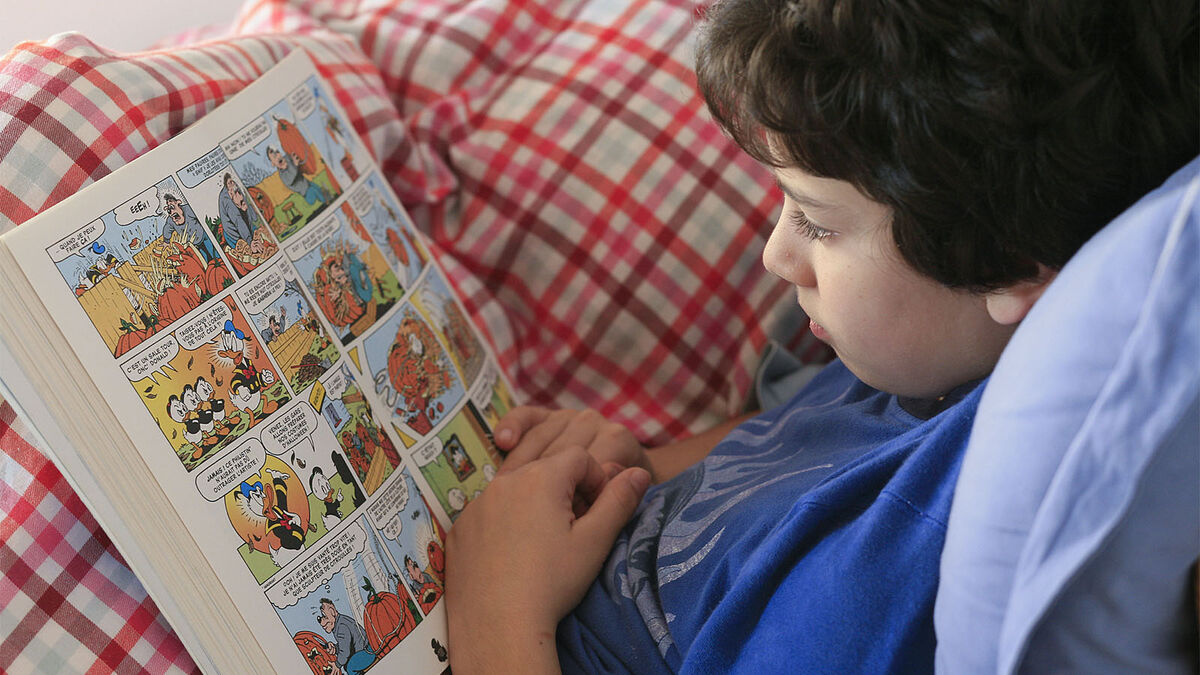
If you find yourself wondering “What is a graphic novel?” you are not alone. Graphic novels are a relatively new genre of books that often confuses readers. Graphic novels have characteristics of comic books and standard novels. Explore what is considered a graphic novel and why to better understand this visual genre.
What Is a Graphic Novel?
The simple, general definition of a graphic novel is “a story of some length in comic-strip format, usually bound as a book.” Graphic novels can be found in almost any book genre. It is their format that categorizes them more than their content.
Major book publisher Penguin Random House defines a graphic novel as a book that “uses the interplay of text and illustrations in comic-strip format to tell a story.”
Characteristics of Graphic Novels
Graphic novels can often be distinguished by their characteristics. If a book has all of these elements, it is likely a graphic novel.
- images tell most of the story
- heavy use of dialogue bubbles and narration boxes
- frequent use of sound effects
- similar in length to typical novels
- bound like a standard book
- stands alone
Graphic Novel vs. Comic Book
Graphic novels are considered by some publishers to be a subgenre of comics. The main difference between a graphic novel and a comic book is that a graphic novel is longer and covers multiple storylines in one book. Comic books, on the other hand, cover multiple story lines across a series of issues or volumes.
Graphic Novel vs. Picture Book or Illustrated Novel
Big book publisher Scholastic shares that graphic novels must tell a story “using a combination of words and pictures in a sequence across the page.” Picture books and illustrated novels typically tell a story through words, then use images to complement the story.
Examples of Graphic Novels for Kids
Graphic novels are trending for kids, especially early readers and chapter books. Even many classic children’s novels have been reformatted in graphic novel form for today’s market.
- BONE by Jeff Smith
- Smile by Raina Telgemeier
- Amulet by Kazu Kibuishi
- Cleopatra in Space by Mike Maihack
- Captain Underpants by Dav Pilkey
- Sidekicks by Dan Santat
- Knights of the Lunch Table by Frank Cammuso
Examples of Graphic Novels for Adults
Long ago, graphic novels referred to novels that contained graphic details of things like death or sexuality. Today, they continue to take on taboo topics, but adult graphic novels aren’t necessarily “graphic” in the old sense of the word.
- Maus by Art Spiegelman
- Watchmen by Alan Moore and Dave Gibbons
- Ghost World by Daniel Clowes
- Daddy's Girl by Debbie Drechsler
- Locke & Key by Joe Hill and Gabriel Rodriguez
- Violent Cases by Neil Gaiman
- The Sculptor by Scott McCloud
Brief History of Graphic Novels
Images have been used to tell stories throughout history, even in cave drawings. Graphic novels can be considered the latest step in the evolution of comic strips, which appeared in newspapers as early as the late 19th century. Comic strips then became comic books in the early 1900s.
There is some disagreement on the first graphic novel, but A Contract with God, and Other Tenement Stories by Will Eisner is a great early example that was published in the U.S. in 1978. Although books like this were reformatted forms of standard comics, the media viewed them as different.
Graphic Representation of Stories
Whether you love them or hate them, or even understand them, graphic novels are a unique genre. Explore other book types, or genres, to broaden your literary horizons even more.